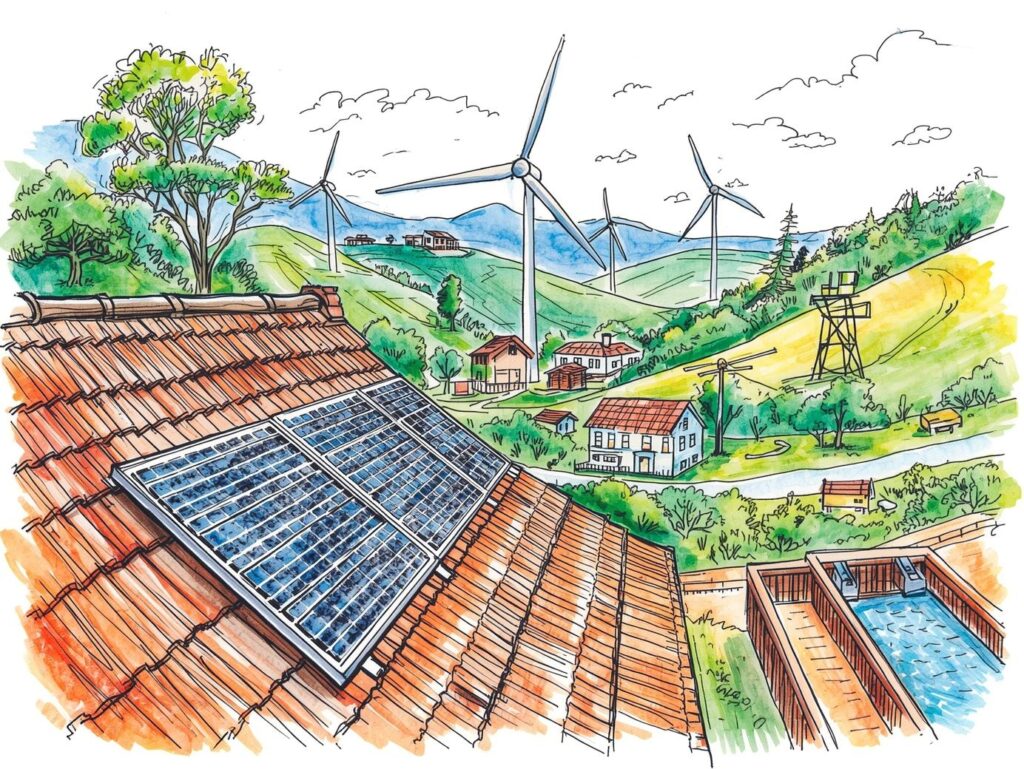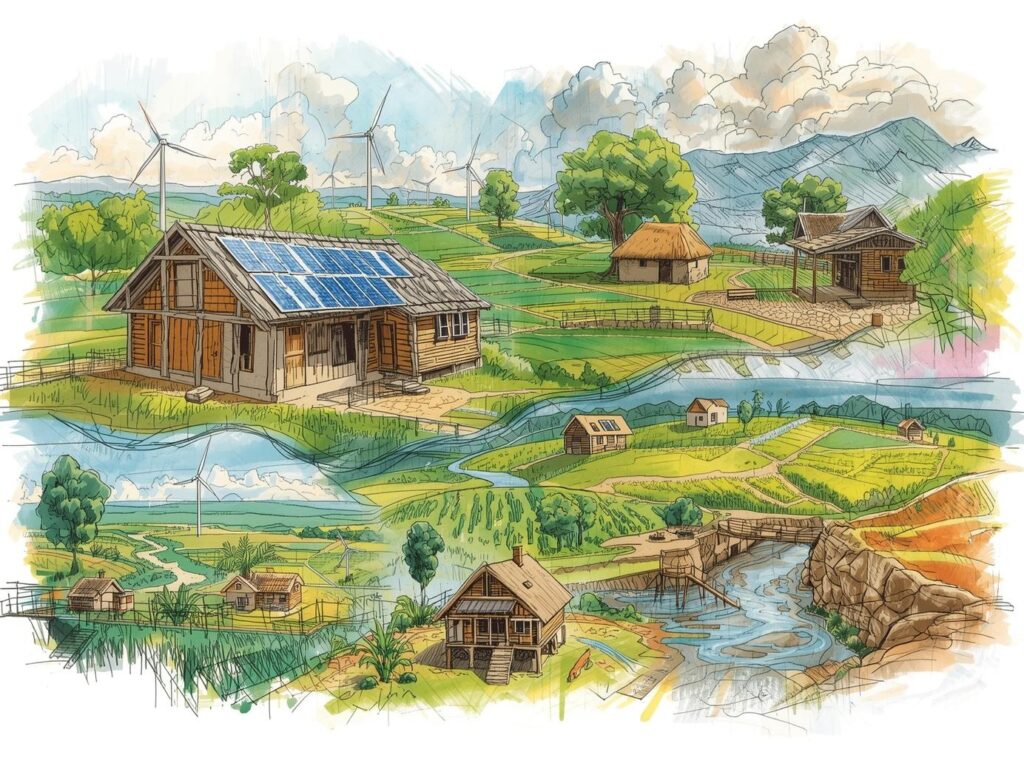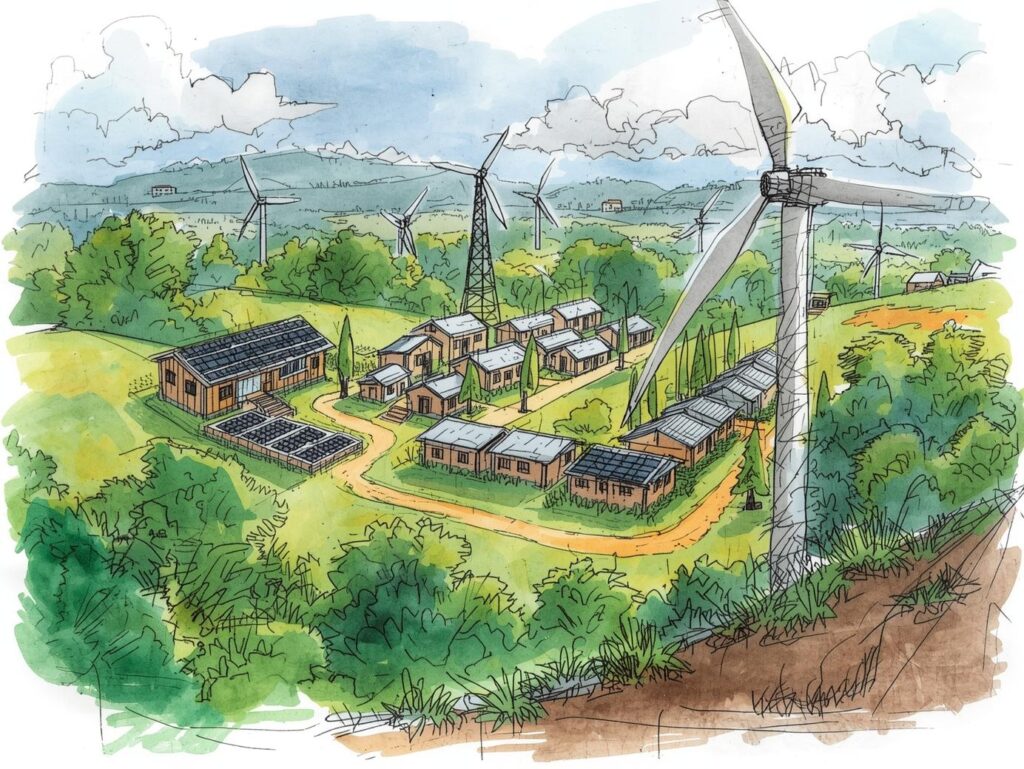Introduction
Climate change, environmental degradation, and resource scarcity are among the most pressing challenges of the 21st century. Latin America, with its rich biodiversity, extensive forests, and agricultural lands, faces both unique opportunities and vulnerabilities in the pursuit of sustainable development.
Green technologies—innovations that reduce environmental impact, improve efficiency, and promote sustainability—are essential for addressing these challenges. Organizations like CHUYA SONCCO recognize that technology and sustainability must go hand in hand, creating solutions that empower communities, protect ecosystems, and stimulate economic growth.

The Importance of Green Technologies
1. Renewable Energy Solutions
- Solar, wind, and hydroelectric technologies can provide clean, affordable energy, especially in rural and off-grid areas.
- Renewable energy reduces reliance on fossil fuels and lowers greenhouse gas emissions.
2. Sustainable Agriculture
- Precision agriculture uses sensors, data analytics, and AI to optimize water usage, fertilizer application, and crop management.
- These methods increase productivity while minimizing environmental damage.
3. Waste Management and Circular Economy
- Technologies for recycling, composting, and bioenergy convert waste into resources.
- Circular economy models reduce environmental impact and create local economic opportunities.
4. Water Management
- Smart water management systems monitor usage, detect leaks, and optimize irrigation.
- These technologies are critical for regions facing drought or water scarcity, especially in Andean and semi-arid zones.
5. Conservation and Biodiversity Monitoring
- Drones, satellite imagery, and AI allow real-time monitoring of forests, rivers, and endangered species.
- Communities can participate in data collection, supporting conservation initiatives and sustainable land use.
Challenges to Implementing Green Technologies
1. Infrastructure and Investment Gaps
- Many rural and marginalized communities lack access to electricity, internet, and funding.
- Public and private investment is essential to scale green solutions.
2. Knowledge and Skills
- Adoption requires technical training and education for local communities and professionals.
- Without capacity building, technologies may be underutilized or mismanaged.
3. Policy and Regulatory Frameworks
- Sustainable technology initiatives require supportive policies, incentives, and environmental regulations.
- Lack of clear frameworks can hinder innovation and adoption.
4. Cultural and Social Acceptance
- Communities must understand and trust new technologies.
- Solutions must adapt to local realities and traditions to ensure sustainability.

Lessons from Latin America
Brazil
- Large-scale solar and wind energy projects have increased renewable energy capacity.
- Environmental monitoring using AI supports conservation of the Amazon rainforest.
Chile
- Investment in precision agriculture and renewable energy has boosted rural development.
- Public-private partnerships promote sustainable mining and water management practices.
Costa Rica
- National policies prioritize renewable energy and carbon neutrality.
- Community-based programs integrate local knowledge with green technologies.
Peru
- Pilot projects in rural energy, sustainable agriculture, and water management demonstrate potential but need scaling and support.

The Role of CHUYA SONCCO
CHUYA SONCCO’s approach to green technologies and sustainable development includes:
- Community-Based Renewable Energy Projects
- Solar microgrids, solar water heaters, and wind energy solutions for off-grid areas.
- Sustainable Agriculture and Food Security Programs
- Training in precision agriculture, organic farming, and climate-smart practices.
- Water Management Initiatives
- Smart irrigation, rainwater harvesting, and monitoring systems.
- Education and Capacity Building
- Workshops for youth, women, and farmers to build technical skills and environmental awareness.
- Partnerships and Innovation Hubs
- Collaboration with universities, tech companies, and local governments to develop scalable green technology projects.
Toward Sustainable Development
Green technologies are not only tools—they are pathways to equity, resilience, and empowerment. By adopting innovative, environmentally-friendly solutions, communities can:
- Protect ecosystems and biodiversity.
- Improve local economies and livelihoods.
- Build resilience to climate change and environmental shocks.
CHUYA SONCCO emphasizes that technology must be adapted to the cultural, geographic, and social context to ensure that sustainability is inclusive and effective.
Conclusion
Sustainable development in Latin America requires a synergy between technology, communities, and policy. Green technologies offer solutions to environmental, social, and economic challenges—but only if implemented responsibly, inclusively, and collaboratively.
CHUYA SONCCO is committed to fostering innovation that is ethical, environmentally conscious, and socially transformative. By investing in green technologies, we can empower communities, protect natural resources, and build a future where development and sustainability go hand in hand.





